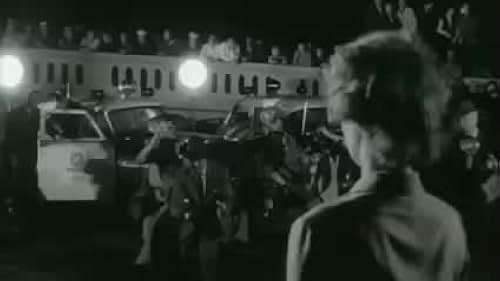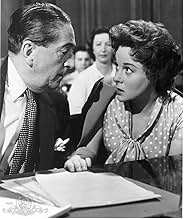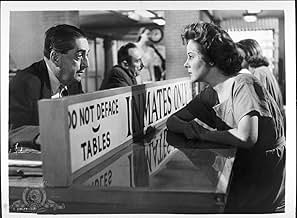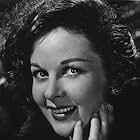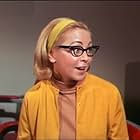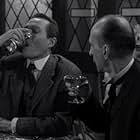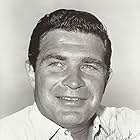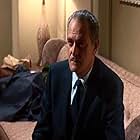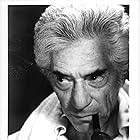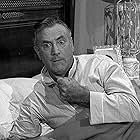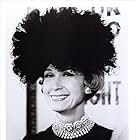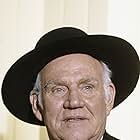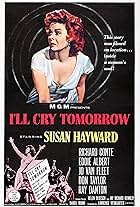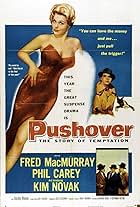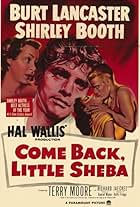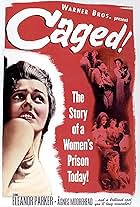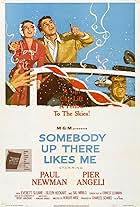IMDb RATING
7.5/10
7.5K
YOUR RATING
A prostitute sentenced to death for murder pleads her innocence.A prostitute sentenced to death for murder pleads her innocence.A prostitute sentenced to death for murder pleads her innocence.
- Won 1 Oscar
- 6 wins & 16 nominations total
Gage Clarke
- Attorney Richard G. Tibrow
- (as Gage Clark)
Storyline
Did you know
- TriviaA woman named Betsy Ann Smith from Wakefield, Virginia won a bit part in this film as a prize on The Price Is Right (1956).
- GoofsWhen Barbara's son is brought to the jail for a visit and the presence of the news media upsets Barbara, she retreats to an interior area of the jail and pounds on the wall in frustration. The "brick" wall gives slightly as she throws her weight onto it.
- Quotes
Barbara Graham: I never even knew the dame.
Police lieutenant: You know she's been murdered, don't you?
Barbara Graham: Yeah. So was Julius Caesar. I didn't know him either.
- Crazy creditsThe film opens with this statement: The pitiless story told in this film is a true story. This story had to be told to the whole world; the whole world should see it and hear it. What good are films if they do not make us face the realities of our time? Here is the reality of our time, and we have no right to be ignorant of it. The day will come when such documents will seem to us to refer to prehistoric times, and we shall consider them as unbelievable that in earlier centuries witches were burned or thieves had their right hands cut off. Such period of true civilization is still in the future, but this film has the honor of at least contributing to its coming". Albert Camus - Nobel Prize winner.
- ConnectionsEdited into The Clock (2010)
- SoundtracksMy Bonnie Lies Over the Ocean
Featured review
Barbara Graham was a known prostitute with criminal associates. In the early 1950s, Graham and two men were accused of and arrested for the brutal murder of elderly Mable Monahan during the course of a robbery. Convicted and sentenced to death in California's gas chamber, Graham protested her innocence to the end--and many considered that she was less a criminal than a victim of circumstance and that she had been railroaded to conviction and execution. The celebrated 1958 film I WANT TO LIVE follows this point of view, presenting Graham as a thoroughly tough gal who in spite of her background was essentially more sinned against than sinner, and the result is an extremely intense, gripping film that shakes its viewers to the core.
The film has a stark, realistic look, an excellent script, a pounding jazz score, and a strong supporting cast--but it is Susan Hayward's legendary performance that makes the film work. She gives us a Graham who is half gun moll, half good time girl, and tough as nails all the way through--but who is nonetheless likable, perhaps even admirable in her flat rebellion against a sickeningly hypocritical and repulsively white-bread society. Although Hayward seems slightly artificial in the film's opening scenes, she quickly rises to the challenge of the role and gives an explosive performance as notable for its emotional hysteria as for its touching humanity.
As the story moves toward its climax, the detail with which director Wise shows preparations for execution in the gas chamber and the intensity of Hayward's performance add up to one of the most powerful sequences in film history. Ironically, Hayward privately stated that her own research led her to believe that Graham was guilty as sin--and today most people who have studied the case tend to believe that Graham was guilty indeed. But whether the real-life Barbara Graham was innocent or guilty, this is a film that delivers one memorable, jolting, and very, very disturbing ride. Strongly recommended, but not for the faint of heart.
Gary F. Taylor, aka GFT, Amazon Reviewer
The film has a stark, realistic look, an excellent script, a pounding jazz score, and a strong supporting cast--but it is Susan Hayward's legendary performance that makes the film work. She gives us a Graham who is half gun moll, half good time girl, and tough as nails all the way through--but who is nonetheless likable, perhaps even admirable in her flat rebellion against a sickeningly hypocritical and repulsively white-bread society. Although Hayward seems slightly artificial in the film's opening scenes, she quickly rises to the challenge of the role and gives an explosive performance as notable for its emotional hysteria as for its touching humanity.
As the story moves toward its climax, the detail with which director Wise shows preparations for execution in the gas chamber and the intensity of Hayward's performance add up to one of the most powerful sequences in film history. Ironically, Hayward privately stated that her own research led her to believe that Graham was guilty as sin--and today most people who have studied the case tend to believe that Graham was guilty indeed. But whether the real-life Barbara Graham was innocent or guilty, this is a film that delivers one memorable, jolting, and very, very disturbing ride. Strongly recommended, but not for the faint of heart.
Gary F. Taylor, aka GFT, Amazon Reviewer
Details
- Release date
- Country of origin
- Language
- Also known as
- The Barbara Graham Story
- Filming locations
- Production company
- See more company credits at IMDbPro
Box office
- Budget
- $1,383,578 (estimated)
- Runtime2 hours
- Color
- Aspect ratio
- 1.85 : 1
Contribute to this page
Suggest an edit or add missing content


